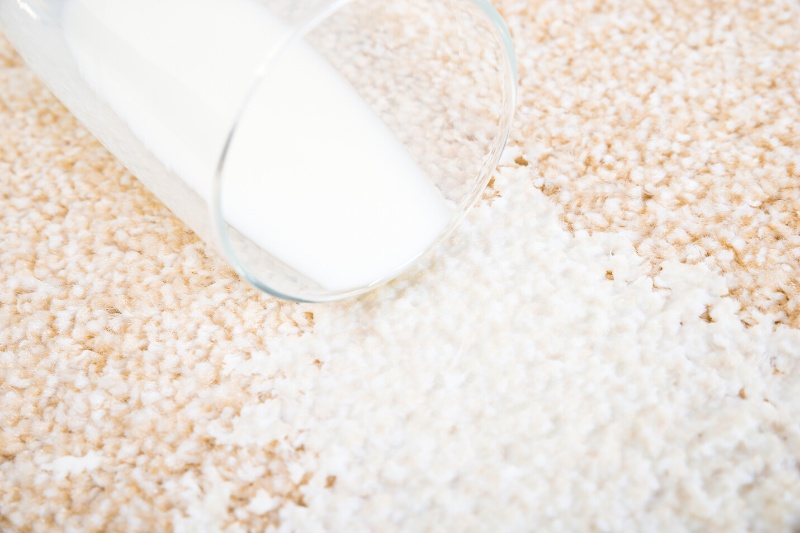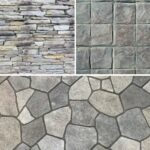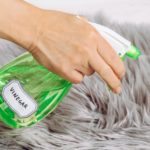Spills are an inevitable part of life, especially in households with young children. One common and often challenging spill is milk on the carpet.
If not cleaned properly and promptly, milk can leave behind unsightly stains and a lingering unpleasant smell.
However, there is no need to cry over spilt milk! With the proper cleaning techniques, you can remove these nasty smells and stains from your carpet—and this guide teaches you how.
We’ll walk you through step-by-step instructions on how to clean milk out of the carpet, helping your flooring look and smell fresh once again.
How to Remove Milk Stains from Carpet
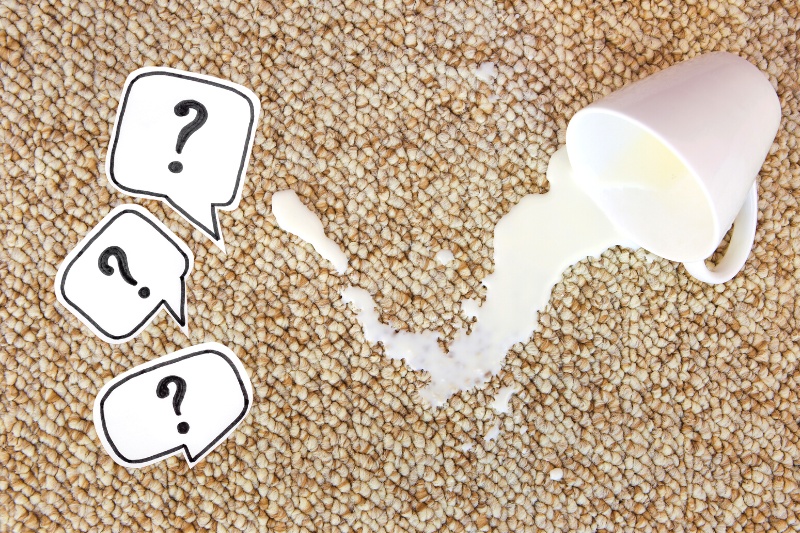
The next time a milk spill happens, don’t panic—tackle it with confidence using this guide.
Here is all the equipment you need for an effective clean:
- Paper towels or microfibre cloths
- White vinegar
- Bicarbonate of soda
- Vacuum cleaner
Once you’ve got these to hand, follow these steps to remove milk stains from your carpet effectively:
1. Act quickly

As soon as the milk spill occurs, act fast to prevent it from seeping deeper into the carpet. Grab a clean cloth or paper towel and gently blot the spill to soak up as much milk as possible.
Avoid rubbing, as this can push the milk further into the fibres and make the smells and stains harder to eliminate.
2. Prepare a cleaning solution
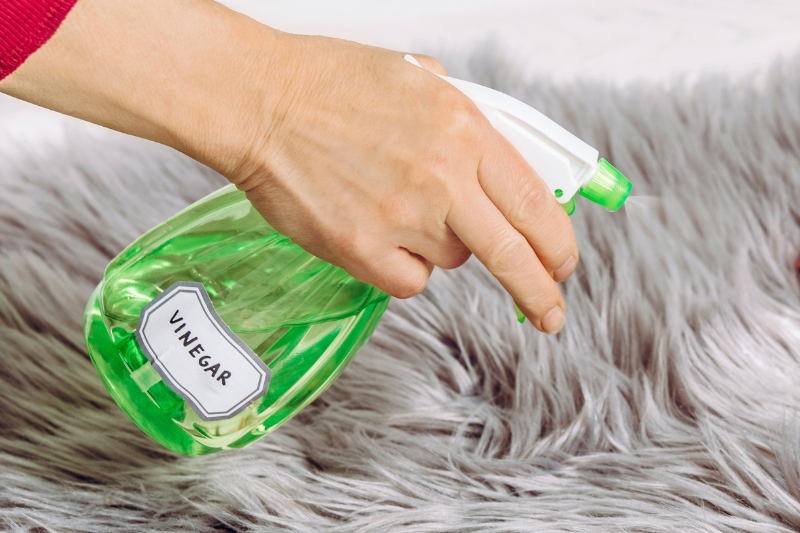
Create a homemade cleaning solution by mixing one part white vinegar with two parts warm water.
Vinegar is a natural and effective cleaning agent that can help break down the proteins and fats in milk. This will help lift both stains and unpleasant odours caused by milk.
3. Test the cleaning solution
Before applying the cleaning solution to the entire spill, test it on an inconspicuous area of the carpet to ensure it doesn’t cause any discolouration or damage.
Wait a few minutes to see the results before applying the vinegar solution to the milk-stained area.
You can dilute the vinegar solution to make a more mild cleaner if required. Be sure to test the diluted solution before moving on to the next step.
4. Treat the spilt milk
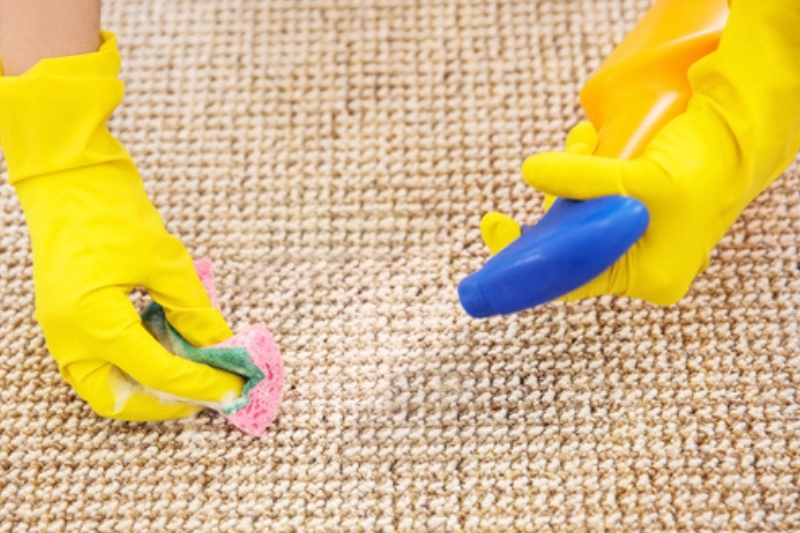
If the spot test doesn’t cause notable discolouration, you can pour a small amount of the cleaning solution directly onto the milk spill.
We suggest doing this with a spray bottle to prevent pouring too much liquid onto the carpet. Oversaturating the rug can cause the milk stain to spread and worsen.
Gently blot the area with a clean cloth or sponge. Repeat this process until the milk stain starts to lift from the carpet fibres. Depending on the severity of the stain, you might need to do this several times.
5. Rinse & blot dry
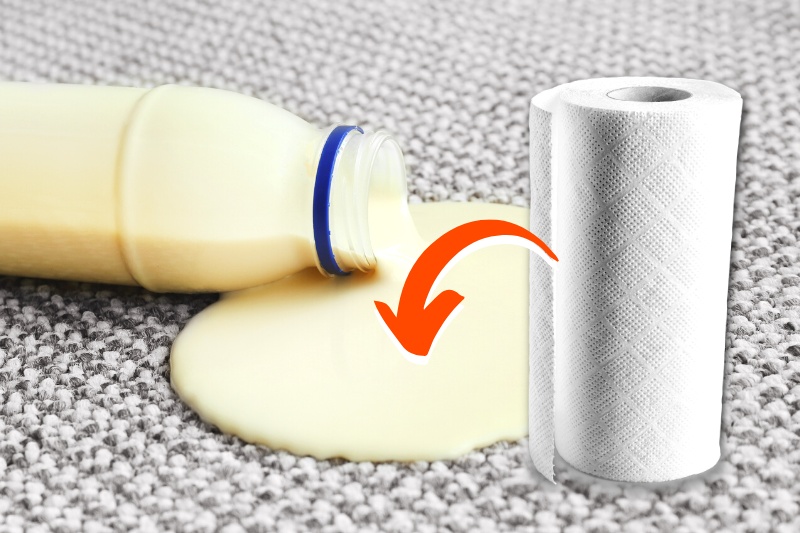
Dampen a clean cloth with water and gently rinse the treated area to remove any remaining cleaning solution. Again, avoid oversaturating the carpet and blot gently to prevent damage to the fibres.
Blot the area again to dry it as much as possible, then place a stack of paper towels over the treated area and press down firmly to absorb any excess moisture.
Repeat this process until the carpet feels almost dry to the touch. This is crucial in preventing your carpet from going mouldy or smelly.
6. Use bicarbonate of soda
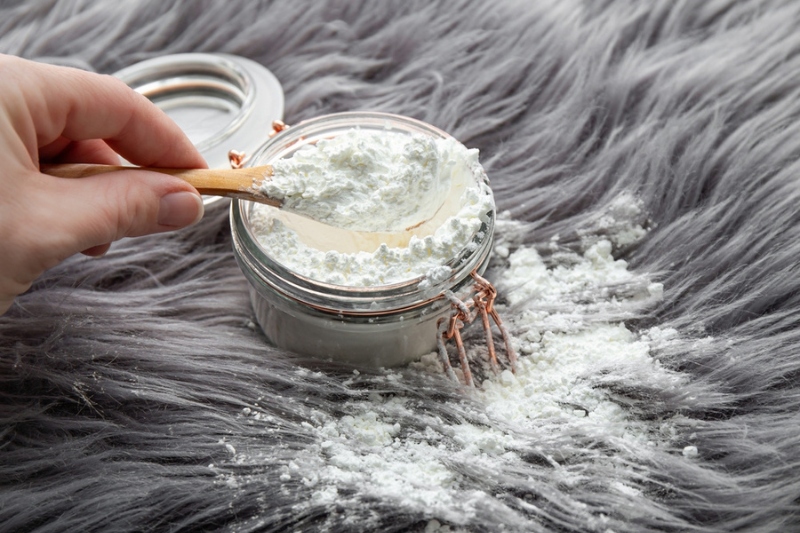
Sprinkle bicarbonate of soda (also known as baking soda in the US) over the treated area to absorb any lingering odours and moisture.
Cows milk is slightly acidic because it contains lactic acid, whereas bicarbonate of soda is slightly alkaline.
Therefore, baking soda effectively neutralises the smell. Leave it to sit for several hours or overnight.
7. Vacuum the carpet
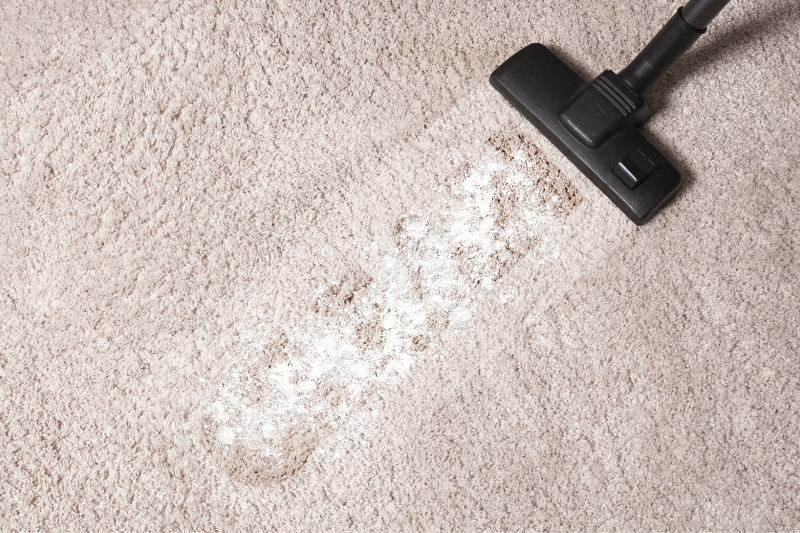
Once the bicarbonate of soda has had enough time to work its magic, vacuum the carpet thoroughly to remove powder and any remaining milk residue.
We recommend leaving the bicarbonate powder to work overnight and vacuuming in the morning for the most effective clean.
Is Milk Hard to Get Out of Carpets?
Milk spills can indeed be challenging to remove from carpets, particularly if not addressed promptly.
The proteins and fats in milk can bind to carpet fibres and become ingrained over time, making the stain more stubborn to clean.
The key to successfully removing milk from the carpet is to act quickly and use the right cleaning techniques and carpet cleaning hacks.
Blotting the spill immediately and applying a suitable cleaning solution can go a long way in preventing the milk from seeping deeper into the carpet and causing long-term damage.
Moreover, addressing any lingering milk smells may require additional steps, such as using enzymatic cleaners, white vinegar solutions, or steam cleaning (see below).
Be patient and persistent in your cleaning efforts, and you will likely achieve a fresh and clean-smelling carpet once again.
How Do You Get the Smell of Milk Out of Carpets?

While milk stains are straightforward to remove with our step-by-step cleaning guide, the smell of milk can be particularly stubborn to eliminate from carpets. Here are some additional steps you can take to get rid of the milk smell:
- Enzymatic cleaner: Consider using an enzymatic cleaner specifically designed to break down organic compounds, such as milk. Apply the cleaner to the affected area and follow the manufacturer’s instructions for the best results.
- White vinegar solution: If the milk smell persists, try a stronger white vinegar solution. Mix equal parts white vinegar and water in a spray bottle and lightly mist the affected area. Allow it to sit for a few minutes before blotting the area with a clean cloth.
- Steam cleaning: Consider using a steam cleaner for deep and thorough cleaning. Steam cleaning can help lift stubborn milk odours and leave your carpet smelling fresh. You can find a list of the best steam cleaners currently on the market here.
Why Milk Spills Need Immediate Attention
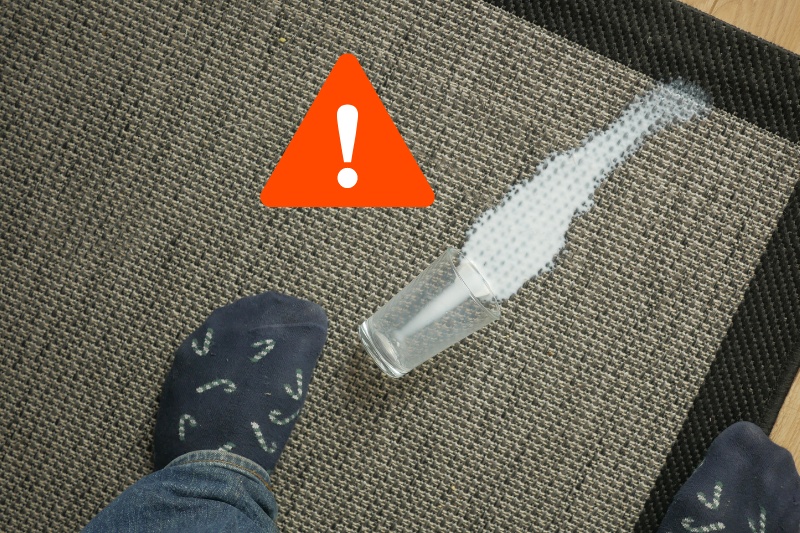
Milk spills may seem harmless at first, but they can lead to significant carpet issues if not dealt with promptly. This is crucial for two reasons:
- Milk contains proteins, fats, and sugars, making it an ideal breeding ground for bacteria and mould. When milk soaks into the carpet fibres, it creates a welcoming environment for these microorganisms to flourish.
- If milk is left to dry on the carpet surface, it can leave behind a sticky residue that attracts dirt and dust. This can cause the affected area to become discoloured and unsightly, requiring even more effort to clean later.
Therefore, addressing milk spills immediately is essential to prevent long-term damage and maintain a clean and hygienic carpet.

Hannah has a passion for cleaning. She worked her way around Australia by cleaning hostels in exchange for free accommodation and used her cleaning skills to bag a job as a chalet host for a luxury ski company in France.
